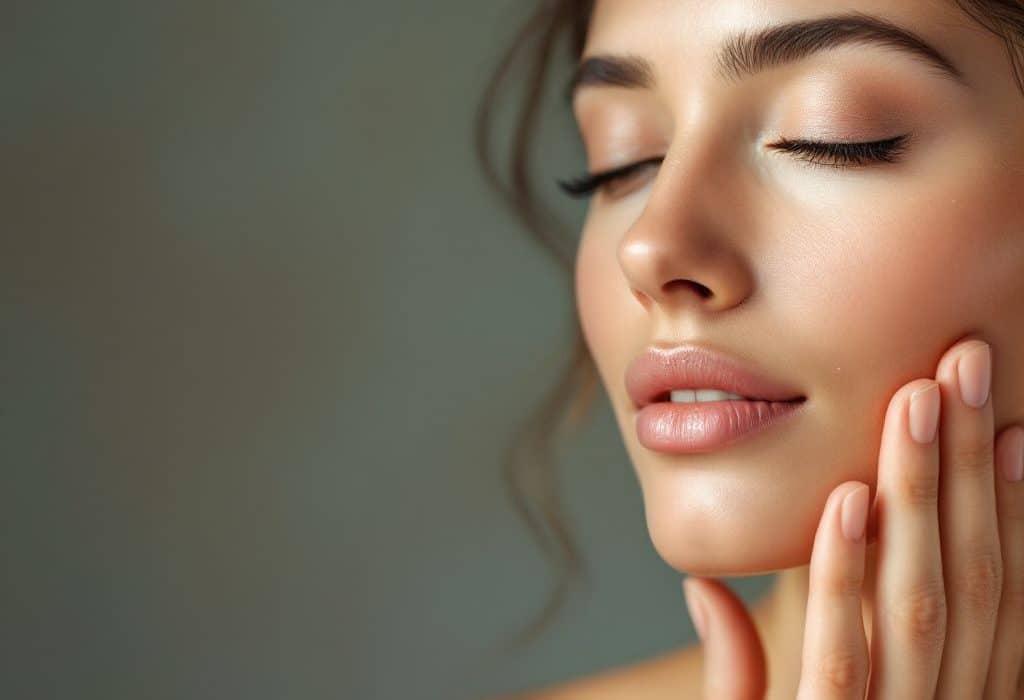Hey there! Have you ever wondered why some people swear by facial reflexology and its magical touch when it comes to enhancing their natural skin care routine? Seriously, if you’re scratching your head over why your skincare regimen isn’t delivering that radiant look you dream of, you might want to sit back for a few moments. Let’s dive into the wonderful world of facial reflexology maps together. Trust me, it’s more than just pressing a few random face points.
What’s the Deal with Facial Reflexology Maps, Anyway?
So, what exactly is a facial reflexology map? Imagine this: Your face as an intricate map, filled with various highways and country roads leading to different destinations within your body. Certain points on your face connect with different organs and systems. By applying pressure on specific face points, it’s said you can stimulate these areas to promote health and vitality. Sounds cool, right?
However, it’s not just about pressing your cheeks willy-nilly. There’s a method to this madness, and we’re here to explore it. We’re diving into how those face points create a bridge to natural skin care—giving you a glow that potential trips to the spa often promise but don’t deliver.
Unpacking Natural Skin Care Benefits
Let’s pause a second. Why all this fuss about natural skin care? Well, think about the piles of creams, serums, and treatments that fill up our bathroom shelves. They’re expensive and can contain chemicals whose names are impossible to pronounce. With facial reflexology, you’re using something you’ve had with you all along—your very own touch—to improve skin health.
Engaging in natural skin care emphasizes healthier, more sustainable practices. Plus, mastering the art of facial reflexology feels like learning to play a musical instrument—a journey that’s both educational and rewarding.
Mapping the Way: Key Face Points You Can Try

Now that you’re intrigued, let’s get into the good stuff! Imagine a map with clear, cut-out sections that direct you where to go. That’s how we’ll tackle this—by navigating key face points associated with reflexology. Think of these sections as the ultimate map for redirecting your skin’s journey towards health and wellness.
1. Third Eye Point (Yintang)
First stop, the Third Eye point! Sitting quietly between your eyebrows, this point isn’t just for mystical thoughts or deep meditation. Applying pressure here can potentially help relieve stress and tension. Letting go of stress is essential in having skin that glows—the more relaxed your muscles, the more comfortable your skin feels.
2. Sinus Soother (Stomach 3)
This might sound strange initially—your stomach referenced on your face? Yep! Located directly below your cheekbones, these face points are akin to opening windows in a stuffy room. The act of tapping or gently pressing can not only ease sinus discomfort but can also give your face a refreshed look by helping reduce puffiness.
3. Boosting Beauty With Jaw Points (Spleen 6)
Shift down to your jawbone, and you’ll find a territory worth exploring. The points nestled near your jaw connect to the spleen area, which plays a crucial role in overall immune function. By gently pressing or massaging this region, it can enhance circulation—one of the keys to vibrant skin and effective natural skin care.
4. Brightening Eye Points (Gallbladder 20)
For those who suffer from strained eyes or endless screen time, applying pressure along the brow bone might offer relief. Situated near the temples, these points also ease away tension and bring a sense of clarity. Eye creams are great, but a consistent reflexology routine can be a more sustainable night-time ritual for brighter eyes.
Techniques to Master Your Facial Reflexology
Alright, I know what you’re thinking: How on earth do we know when we’re influencing the right face points? Don’t worry—the beauty of facial reflexology lies in its adaptability.

Start Simple: Focus Your Touch
Keep it straightforward. Begin by warming up your fingers and gently pressing key areas discussed above. Light but firm pressure is the goal. Feel your way, listening to your skin’s response—no need for discomfort.
Get Consistent: Weave it into Your Routine
Results are cultivated, not magically bestowed. Making facial reflexology a regular part of your skin care routine is the way to make sure you’re reaping all its possible benefits. Even five minutes a day can make a difference.
Pair it Up: Synergize with Other Natural Skin Remedies
Facial reflexology isn’t a lone ranger! Use it in conjunction with other natural skin care treatments like plant-based oils or hydrating facial mists. Tying them together maximizes the potential impact.
Mindful Touch: Stay in tune with Sensations
Engage mindfully. Let each session be a mini-relaxation getaway where you’re honed in on your touch. Not only will your skin appreciate the care, but your overall mood will thank you too.
Common Facial Reflexology Missteps

Let’s clear up some potential navigating pitfalls when working with these facial maps. Sometimes, it can be easy to overcomplicate:
- Don’t Press Too Hard: It’s tempting to assume more pressure equals better results. However, this can lead to unnecessary discomfort and redness.
- Neglecting Other Skin Care: Reflexology is great, but it shouldn’t replace other essential skin care practices like cleansing and moisturizing.
- Skipping Warm-Up: Jumping straight into pressured points could limit effectiveness. Always start with skin that’s warm, relaxed, or cushioned by a warm towel.
Comparing Reflexology with Facials
You might be wondering: how does this really compare to other skincare routines like getting a facial? Facials focus largely on external treatments. Sure, they cleanse and soften, but reflexology is like hitting a reset button, encouraging internal processes to reflect outward. In a way, it’s working from the inside out, and sometimes incorporating both can create a beautiful harmony.
Why Give This a Go?
The heart of reflexology’s appeal is that it’s something personal. You become the master of your own skin care adventure. Over time, this focus on natural skin care and personal ritual may unlock not only healthier skin but a larger sense of relaxation and self-awareness. By understanding and working with face points mindfully, you just might light up the vibrant results you desire.
So, the next time you carve out a moment for self-care, don’t just reach for the moisturizer or serum. Spend that moment with your fingers gently pressing, exploring this deeply rooted technique. Your skin’s health journey is unique, and facial reflexology could very well be an important landmark on that map.
Dive into it! Feel each connection, learn new routes, and allow this map to guide your path—one face point at a time, naturally ticking those boxes in your natural skin care list. Trust me on this one—not only will it become part of your routine, but a touchstone for connecting lovingly with your skin every day.
Frequently Asked Questions
What are the benefits of using natural ingredients in skin care?
Using natural ingredients in skin care offers several benefits, including hydration, protection from environmental stressors, and anti-inflammatory properties. Natural skincare products are free from harmful chemicals and parabens, making them suitable for sensitive or allergy-prone skin. They also have a low environmental impact as they are biodegradable and do not contain synthetic additives[1][5].
Which natural ingredients are effective for anti-aging and skin hydration?
Natural ingredients like aloe vera, jojoba oil, green tea, and rosehip oil are highly effective for anti-aging and skin hydration. Aloe vera promotes collagen production, helping to keep the skin youthful and vibrant. Green tea and rosehip oil are rich in antioxidants that protect the skin from aging and environmental damage. These ingredients also provide gentle yet effective cleansing and hydration[1][3].
How do natural skincare products differ from synthetic skincare products?
Natural skincare products differ from synthetic ones in that they are sourced from plant-based materials and are minimally processed. Natural ingredients are rich in vitamins, antioxidants, and other beneficial compounds that nourish and protect the skin. Unlike synthetic skincare ingredients, natural ones are generally gentler and less irritating, making them a great choice for those with sensitive skin[1][5].
Are natural skincare products suitable for all skin types, including sensitive skin?
Yes, natural skincare products are suitable for all skin types, including sensitive skin. Natural ingredients such as coconut oil, shea butter, and aloe vera are known for their soothing and healing properties, which can help calm irritated skin and reduce redness and puffiness. These products are less likely to cause skin irritation because they do not contain harmful chemicals, artificial colors, or other by-products[3][5].
References

